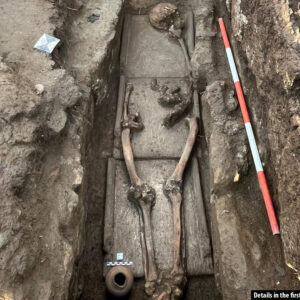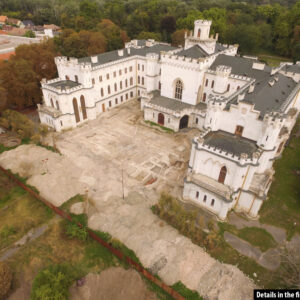In the heart of Paderborn, Germany, a fascinating archaeological excavation is unfolding beneath the city’s historic center. Led by the Westphalia-Lippe Regional Association, this dig is revealing an ancient landscape that has long been hidden beneath layers of history. The focus of the excavation? A series of rock-cut cellars and a historic quarry dating back to the medieval period. The excavation, which began in late 2024, is preparing the ground for a new administration building, but the discoveries made so far have provided insights into a past that stretches back more than a thousand years. This post delves into the details of this exciting excavation and its implications for understanding Paderborn’s history.
Introduction to the Excavation
The excavation in Paderborn is not just another routine construction project—it’s a journey into the depths of history. The area being excavated is situated near the immunity wall of the Abdinghof Monastery, bordered by Marienplatz and Abdinghofstraße. These are significant areas of the city, rich in historical value, and the findings here promise to tell us more about medieval Paderborn. The excavation started in November 2024 as a preparatory step for the construction of a new city administration building, but what has emerged is far more than just construction debris.
The Historic Quarry Beneath Paderborn
At the heart of this excavation lies a quarry that has provided essential building materials for Paderborn’s architectural history. This quarry was used as far back as the 11th century, providing stone for churches and palaces that once graced the city. Archaeologists have unearthed evidence of its extensive use over time, though its full size remains unclear.
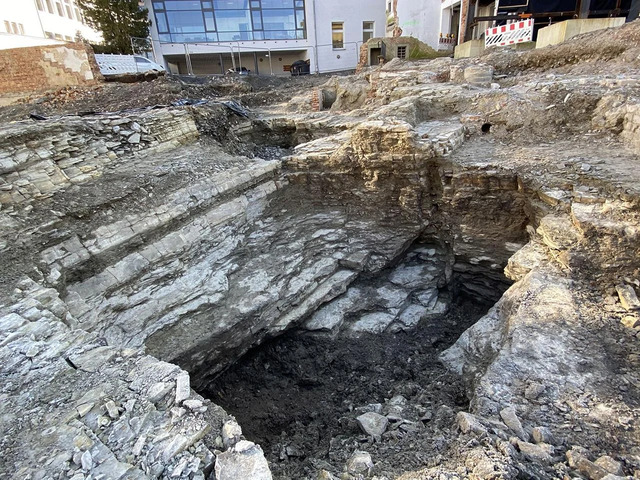
Early findings suggest that the quarry extended southwest from the area around the monastery toward the lower-lying Pader Springs. Archaeologists have uncovered layers of backfill as deep as five meters, and while they have not reached the bottom yet, the excavation reveals the scale of the quarry’s use throughout the medieval period. It was a vital resource for construction, but it also tells a story of the growth and expansion of the city during this time.
Video
Watch the video as archaeologists uncover a rare cache of Roman-era weapons hidden in a cave in the Judean Desert.
Rock-Cut Cellars and Their Purpose
In addition to the quarry, the excavation has uncovered several rock-cut cellars beneath Paderborn’s historic center. These subterranean spaces, carved directly into the rock, likely served as stable foundations for the buildings that once stood above them. As the city expanded, these basements would have been used for storage or as living spaces for local residents.
The discovery of these cellars offers a rare glimpse into the everyday lives of medieval inhabitants. These rock-cut rooms were common in medieval European towns, but the extent and preservation of Paderborn’s cellars make this find particularly remarkable.
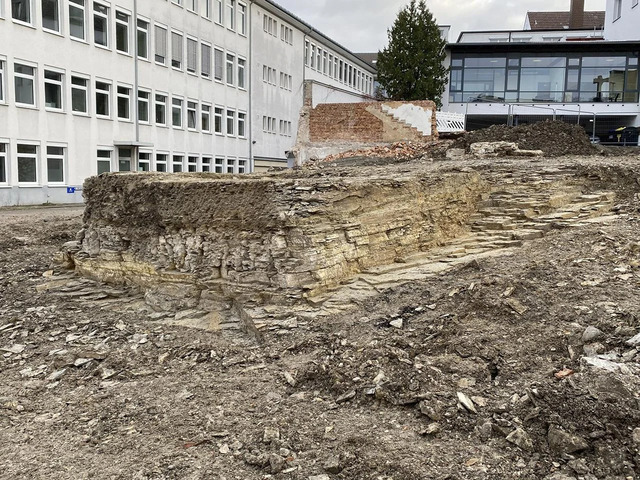
Archaeological Challenges and Progress
While the excavation has yielded impressive discoveries, the process has not been without its challenges. One major difficulty is the transformation of the area during the post-war period, when much of Paderborn was destroyed and rapidly rebuilt following World War II. The changes made during reconstruction efforts have obscured parts of the original medieval landscape. This makes dating certain features, such as the quarry and cellars, more difficult. Modern cellar structures are easily distinguishable from the medieval layers, but the backfill from previous work has complicated efforts to pinpoint exact historical timelines. Despite these challenges, the team continues to make progress and uncover significant artifacts and architectural features.
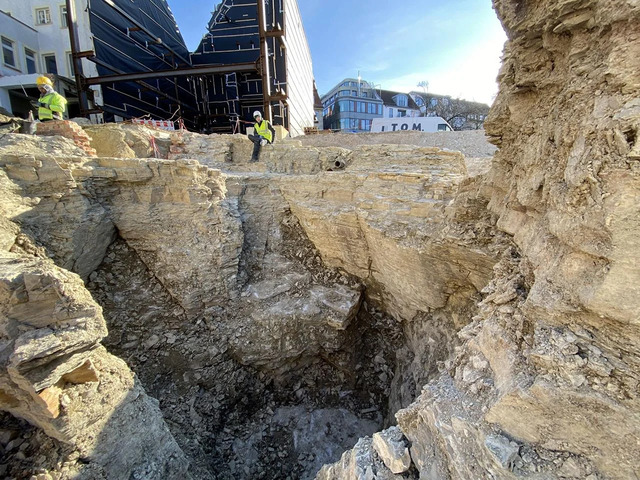
The Influence of Post-War Reconstruction
The impact of World War II and the subsequent reconstruction efforts cannot be overstated. After the war, large sections of Paderborn were in ruins and required quick rebuilding. During this rush to restore the city, little attention was paid to preserving the archaeological sites that lay beneath the rubble.
Many parts of the medieval city were lost in the process, and valuable historical documentation was scant. It wasn’t until the late 20th century that archaeology started to play a more prominent role in understanding Paderborn’s past. The excavation underway now is in part a response to the lost opportunities of the post-war period, as modern archaeologists work to uncover what was hidden during that hurried reconstruction.
Insights into Medieval Paderborn Construction
The discoveries made in the excavation provide crucial insights into the building techniques and construction methods used in medieval Paderborn. The rock-cut cellars offer a tangible example of how structures were created using locally sourced materials.
The quarries were essential not only for large-scale constructions like churches and palaces but also for smaller residential projects. The techniques used to carve these spaces directly into the rock reflect the resourcefulness and ingenuity of the builders. By studying these features, archaeologists can learn about medieval architectural practices and how the city evolved over the centuries.
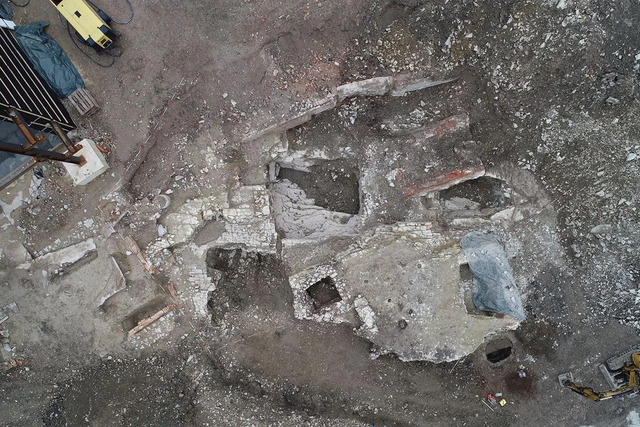
Future Prospects for the Excavation and Preservation
As the excavation continues, there are exciting prospects for further discoveries. The team hopes that additional layers of backfill will provide more precise dating evidence for the structures and events associated with the site. The challenge remains in distinguishing between medieval features and later additions, but archaeologists are optimistic that continued digging will shed light on this aspect of Paderborn’s history. Once the excavation phase is complete, the findings will be preserved and incorporated into the new development. The city’s administration has committed to integrating historical elements into the modern construction, ensuring that the rich history of Paderborn is not lost in the pursuit of progress.
Conclusion and Historical Implications
The excavation in Paderborn is more than just an archaeological project—it’s a window into the city’s medieval past. The discovery of the quarry and the rock-cut cellars provides valuable insights into the construction practices, daily life, and urban development of one of Germany’s historic cities. These findings also highlight the challenges faced by archaeologists working in areas that have undergone significant post-war reconstruction. As the excavation progresses, it will continue to yield important information that will help us understand how Paderborn evolved over time. This project underscores the importance of preserving our historical sites and learning from the past, even as we move forward into the future. The history of Paderborn is being rewritten, layer by layer, and it’s a story we are only beginning to fully understand.
Video
Watch the video as archaeologists uncover a rare discovery in a cave, shedding light on the past.

